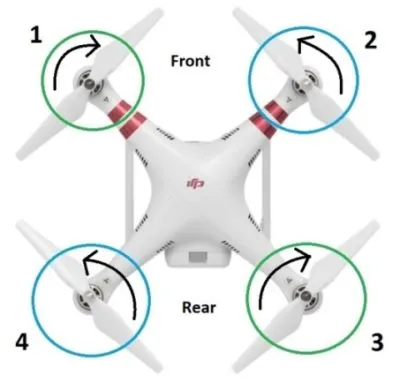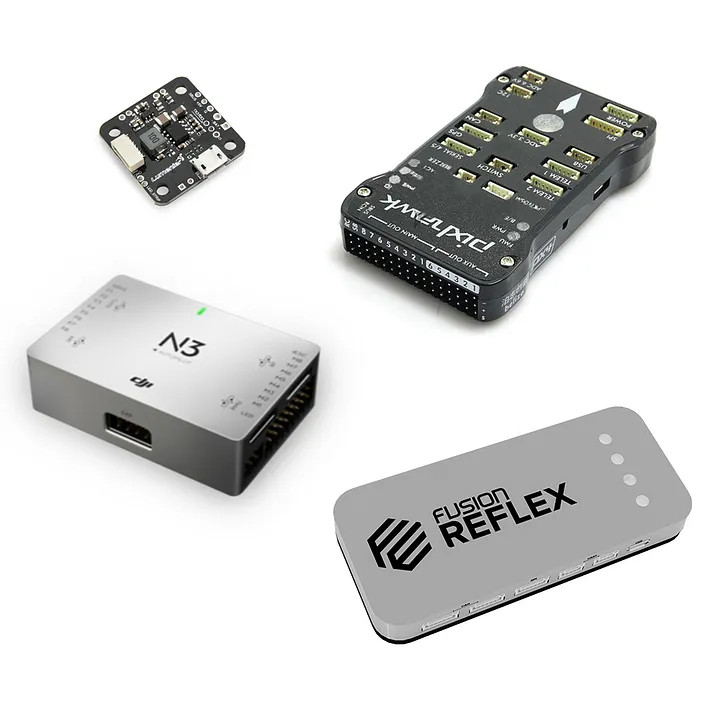The Anatomy-Drone: Understanding the Key Components
Introduction
I have always been fascinated by drones, but I never fully understood how they flew and remained stable until I started researching them. In this article, I’ll explain the key parts that make up a drone, including:
- Batteries
- Propellers
- Flight Controllers
- Electronic Speed Controllers
- Power Distribution Board
- Radio Transmitter and Receiver
- GPS
- Gyroscope/Accelerometer
- Magnetometer
- LiDAR
1. Batteries
The success of drones is largely attributed to LiPo (Lithium Polymer) batteries. Without the lightweight and high-energy properties of LiPo batteries, drones would not be as widespread. A battery needs to have high capacity while being lightweight, and LiPo batteries fulfill both criteria, allowing drones to fly faster and longer.
The capacity (measured in milliampere-hours, or mAh) and discharge rate (C-rating) of the battery determine how long a drone can fly and how much power it can deliver to the motors. For example, a 1000mAh battery with a C-rating of 2 can discharge at a rate of 2000mA for 30 minutes until it completely discharges.
2. Propellers
Propellers are one of the most critical components of a drone, as they are responsible for generating the lift needed to keep the drone in the air. The pitch and size of the propellers can significantly impact the drone’s performance, affecting factors such as speed, stability, and thrust. I always thought that the propellers moved in a uniform direction, but this is not the case. In reality, the propellers move in different directions for steering. In Figure 1, if motors 1 and 3 move slightly slower, the drone will yaw, causing the drone to rotate clockwise due to Newton’s Third Law.

3. Flight Controllers
The flight controller is the brain of the drone. It processes input from the pilot (via the radio transmitter) and onboard sensors to control the drone’s motors. This component is responsible for stabilizing the drone during flight by making constant adjustments to the motor speeds based on data from gyroscopes, accelerometers, and other sensors. Advanced flight controllers also support GPS integration, autonomous flight modes, and complex maneuvers. An example of a flight controller used commercially is the Pixhawk flight controller (Figure 2).

4. Electronic Speed Controllers (ESCs)
The electronic speed controller (ESC) is the bridge between the flight controller and the motors. It regulates the power delivered to each motor, allowing the drone to adjust its speed and direction. ESCs convert the low-power signals from the flight controller into high-power signals that drive the motors.
5. Power Distribution Board (PDB)
The power distribution board is a crucial component that channels power from the battery to various parts of the drone, such as the ESCs, flight controller, and onboard cameras. The PDB simplifies the wiring process by centralizing power distribution, which is especially important in multi-rotor drones with multiple ESCs and motors. Some PDBs also include built-in voltage regulators and current sensors to monitor power consumption.
6. Radio Transmitter and Receiver
The radio transmitter is the device held by the pilot, while the receiver is mounted on the drone. Together, they allow the pilot to control the drone wirelessly. The transmitter sends commands to the receiver, which then relays them to the flight controller. The reliability and range of the radio link are crucial for maintaining control over the drone, especially in long-range or high-altitude flights. Modern transmitters often operate on frequencies like 2.4 GHz or 5.8 GHz.
7. GPS
The Global Positioning System (GPS) is a satellite-based navigation system that provides the drone with location data. GPS is essential for autonomous flight modes, such as waypoint navigation, return-to-launch (RTL), and position hold. By triangulating signals from multiple satellites (Figure 3), the GPS module on a drone can determine its precise location and altitude. This information is then used by the flight controller to maintain a stable position or follow a pre-set path.

8. Gyroscope/Accelerometer
Gyroscopes and accelerometers are inertial measurement units (IMUs) that provide the flight controller with real-time data on the drone’s orientation and movement. The gyroscope measures rotational speed, helping the flight controller keep the drone level by counteracting any unintended tilts. The accelerometer measures linear acceleration, allowing the flight controller to detect changes in velocity and orientation. Together, these sensors play a vital role in stabilizing the drone during flight.
9. Magnetometer
The magnetometer, often integrated with the IMU, measures the strength and direction of the Earth’s magnetic field. This sensor acts as a digital compass, helping the drone maintain a consistent heading during flight. The magnetometer is particularly useful for navigation and is often paired with the GPS to enhance the accuracy of position and orientation data. However, it’s important to calibrate the magnetometer correctly, as it can be affected by electromagnetic interference from other drone components.
10. Lidar (Light Detection and Ranging)
LiDAR is a remote sensing technology that measures distances by illuminating a target with laser light and analyzing the reflected light. In drones, LiDAR is used for obstacle detection, terrain mapping, and altitude measurement. Unlike traditional cameras or sonar, LiDAR can create highly accurate 3D maps of the environment, making it invaluable for applications such as autonomous navigation, precision agriculture, and surveying.
Conclusion
Understanding the components of a drone is essential for anyone interested in building, flying, or optimizing UAVs. Each part, from the propellers to the LiDAR, plays a crucial role in the overall performance and capabilities of the drone. Whether you’re a hobbyist or a professional, knowing how these components interact will help you make informed decisions when designing or upgrading your drone. I sincerely believe that drones have the potential to achieve incredible things — the only limitation is your imagination. So, dive in, explore, and let your creativity take flight.
Resources
-
Fusion Engineering — Flight Controllers Explained: This article provides an in-depth explanation of flight controllers, their role in drone operation, and how they process sensor data to keep drones stable in flight.
-
DroneZon — How a Quadcopter Works: A detailed guide on quadcopter mechanics, focusing on the importance of propeller and motor direction for drone stability and control.
-
Dojo for Drones — Build a Drone: A comprehensive resource that walks you through building your own drone, from selecting components to assembling and programming your UAV.